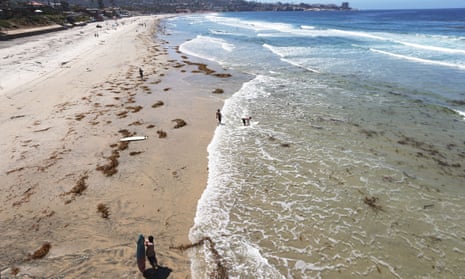Even the oceans are breaking temperature records in this summer of heatwaves. Off the California coast near San Diego, scientists in early August recorded all-time high seawater temperatures since daily measurements began in 1916.
“Just like we have heatwaves on land, we also have heatwaves in the ocean,” said Art Miller of the Scripps Institution of Oceanography.
Between 1982 and 2016, the number of “marine heatwaves” roughly doubled, and will probably become more common and intense as the planet warms, a study released on Wednesday found. Prolonged periods of extreme heat in the oceans can damage kelp forests and coral reefs, and harm fish and other marine life.
“This trend will only further accelerate with global warming,” said Thomas Frolicher, a climate scientist at the University of Bern in Switzerland, who led the research.
Because oceans both absorb and release heat more slowly than air, most marine heatwaves last for at least several days and some for several weeks, said Frolicher.
“We knew that average temperatures were rising. What we haven’t focused on before is that the rise in the average comes at you in clumps of very hot days a shock of several days or weeks of very high temperatures,” said Michael Oppenheimer, a Princeton University climate scientist who was not involved in the study.
Many sea creatures have evolved to survive within a fairly narrow band of temperatures compared with creatures on land, and even incremental warming can be disruptive.
Some free-swimming sea animals may shift their routines, but stationary organisms like coral reefs and kelp forests “are in real peril”, said Michael Burrows, an ecologist at the Scottish Marine Institute, who was not part of the research.
In 2016 and 2017, persistent high ocean temperatures off eastern Australia killed off as much as half of the shallow water corals of the Great Barrier Reef.
The latest study in Nature relied on satellite data and other records of sea-surface temperatures including from ships and buoys. Changes in ocean circulation associated with warmer surface waters will probably mean decreased production of phytoplankton, the experts warned.
